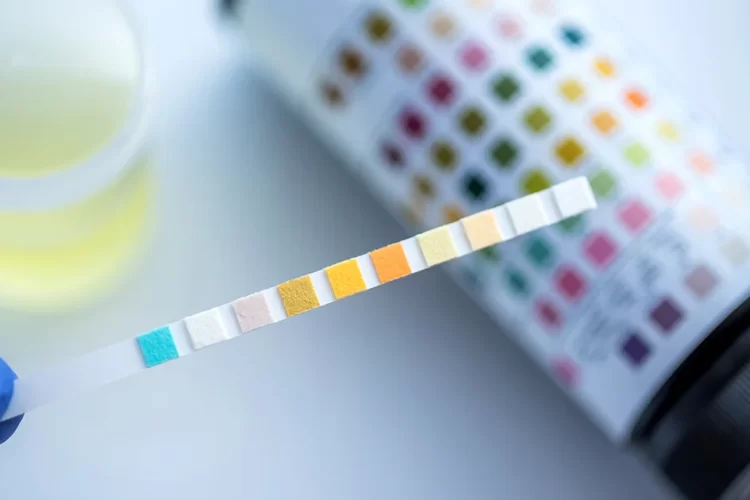The most common workplace drug testing method is pre-employment testing, as reported by the National Institute on Drug Abuse. This is likely due to the need for ensuring a drug-free work environment and the potential risks associated with having illegal substance users among the workforce. Workplaces also commonly conduct random, post-accident, and reasonable suspicion drug testing to further ensure employee safety and productivity.
Enforcing a zero-tolerance drug policy in the workplace has numerous benefits, including promoting employee well-being, enhancing overall efficiency, and safeguarding the industry’s reputation. By reducing absenteeism and preventing substance-related incidents, such policies contribute to a safer and more productive work environment.
During pre-employment testing, prospective employees are typically subjected to a 5-panel screening, checking for substances like cocaine, opiates, marijuana, phencyclidine (PCP), and methamphetamines.
However, in safety-sensitive industries like transportation, a more comprehensive 10-panel or 12-panel screen may be necessary. These extended panels include testing for additional substances such as benzodiazepines, alcohol, MDMA, barbiturates, and others, ensuring comprehensive evaluation of potential employees. Workplace drug testing offers various specimen types and techniques, each with its specific advantages and disadvantages.
Urine Drug Testing
Urinalysis remains the most widely used drug testing method, with approximately 90% of employers preferring it, as reported by HireRight, a background screening firm. Its popularity is due to the convenience, ease of administration, affordability, and rapid delivery of results.
Although urinalysis has a relatively short testing window, detecting substances consumed within the last 1 to 10 days (depending on the drug), it can still identify trace amounts of drugs in the body. This characteristic has earned it the reputation of being the “gold standard” for drug testing and the only method accepted for federal requirement cases. For instance, the transportation industry is obligated by law to conduct urine drug screens, often using lab-based testing for accuracy.
Saliva Screen
The Mouth Swab Drug Test, also known as the oral swab test, presents a viable alternative to urinalysis, offering affordability and convenience. It is especially effective for detecting immediate drug use. The test involves analyzing saliva samples taken from the mouth to identify the presence of drugs and their metabolites. However, it generally only detects substances consumed within the last 2 days.
According to the background screening company, HireRight, approximately 10% of employers currently employ saliva drug testing, and its popularity has been on the rise in recent years.
The procedure is minimally invasive and can be conveniently conducted right in front of the employer, reducing the risk of tampering or adulteration. Collecting samples is simple, enabling on-site testing that saves time and reduces costs. Moreover, the oral swab test eliminates the need for same-gender sample collection, making it a practical choice for workplace drug testing.
Hair Strand Test
Hair testing is a relatively expensive option for drug testing, but it offers the advantage of detecting drug use over an extended period. By analyzing a small amount of hair near the scalp, this method can confirm the presence of opioids, methamphetamine, cocaine, cannabis, or other drugs consumed within the last 90 days.
Despite its effectiveness, hair testing is chosen by only 7% of employers, likely due to its higher cost compared to other methods like urinalysis.
One significant advantage of hair testing is its longer window of detection, surpassing that of urinalysis. However, a potential drawback is the possibility of a false negative result if drug use occurred recently. It typically takes around 7 days for the drug-containing hair to grow out and become detectable.
An important benefit of hair testing is its immunity to interference from dyes, styling products, or other hair chemicals, ensuring reliable and accurate results.
Blood Screen
Blood screening is the most invasive drug testing method, providing a direct measure of drug concentration in the bloodstream at the time of testing. This makes it effective for determining recent drug use or impairment.
While highly accurate, blood testing is not as commonly utilized in the workplace due to its invasiveness and higher cost compared to methods like urine or oral swab testing. It requires the expertise of a trained medical professional and cannot be conducted on-site, which can be impractical for many employers. The discomfort associated with drawing blood is also a concern for both employers and employees, further contributing to its limited use in routine workplace drug testing.
Sweat Test
The sweat test is a drug testing method that includes wearing patches on the skin for several days to collect sweat. The collected sweat is then analyzed for the presence of drugs of abuse. This method offers an extended detection window compared to urinalysis, as it can detect drug use during the entire period the patch is worn.
However, the sweat test is not as commonly used in workplace drug testing. This could be attributed to its less widespread availability and the relative novelty of the method compared to more established testing options.
Selecting the Right Test
Selecting the right drug testing method for a workplace is a crucial decision that depends on several factors. Factors to consider include the nature of the job, safety requirements, legal considerations, and the desired detection window for drug use.
Procuring drug test kits is easy online with reliable suppliers, such as DrugTestKitUSA. Take advantage of a large selection and fast shipping on the secure website: https://drugtestkitusa.com
To ensure a fair and effective drug testing program, it is essential to develop a comprehensive workplace drug testing policy and procedures. Seeking the guidance of a consultant with expertise in legal and effective practices can be highly beneficial. A knowledgeable consultant can help navigate the complexities of drug testing regulations and create a customized plan that aligns with the organization’s specific needs and goals. This approach ensures the implementation of an appropriate and legally compliant drug testing program that prioritizes employee safety and workplace productivity.

